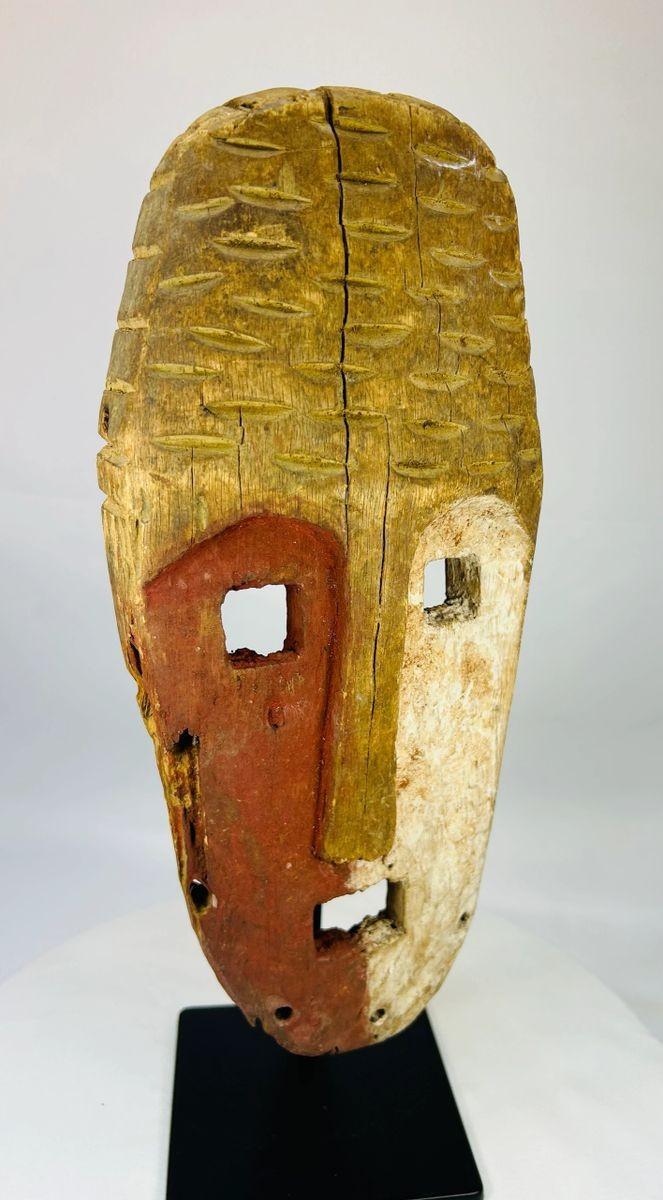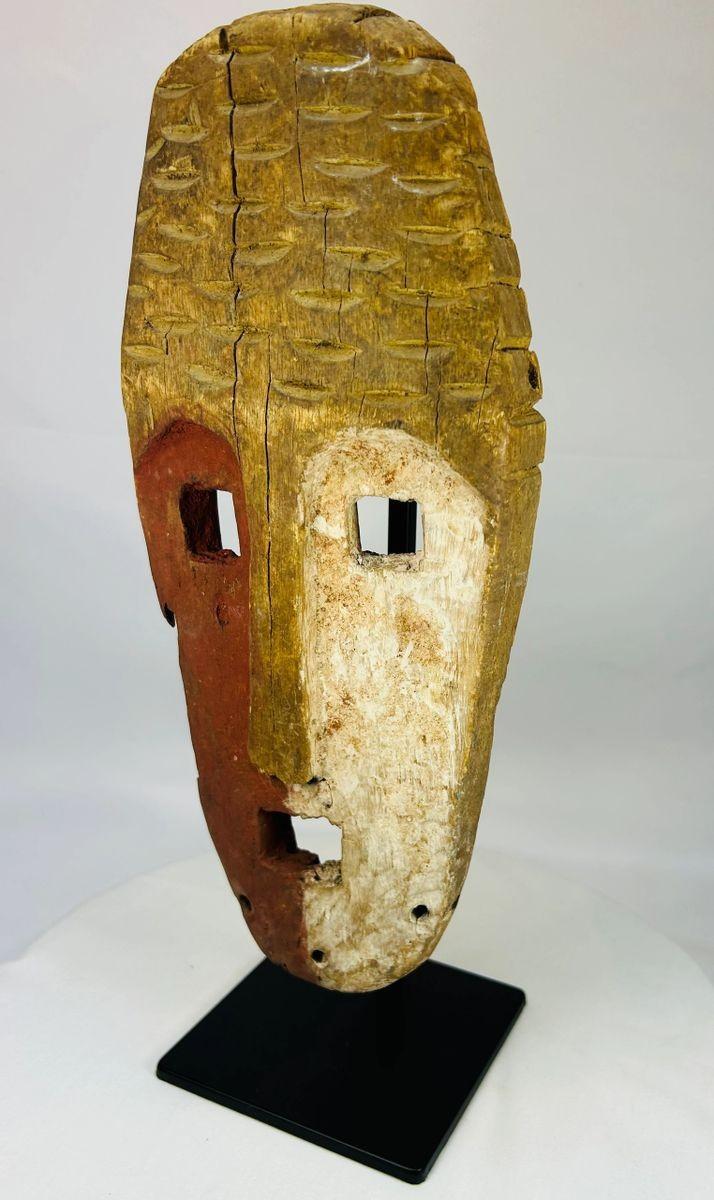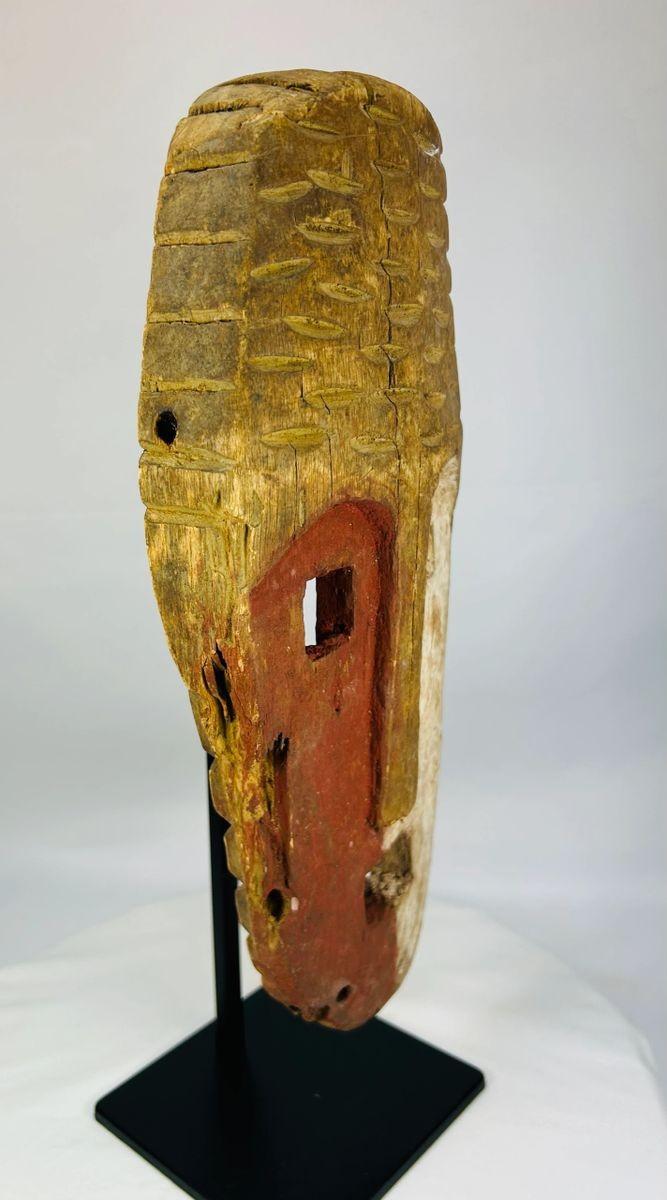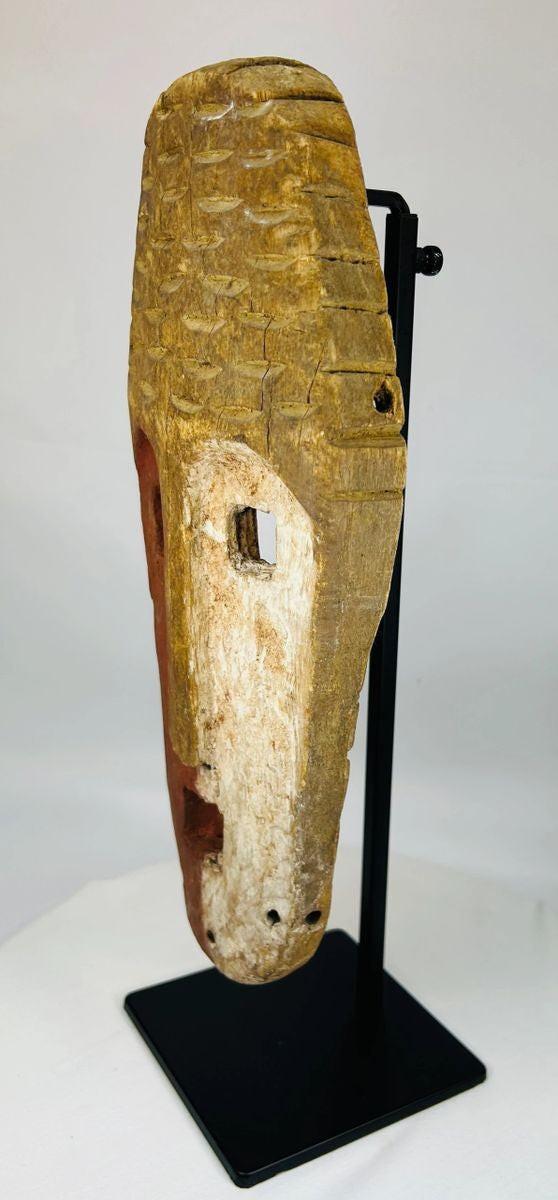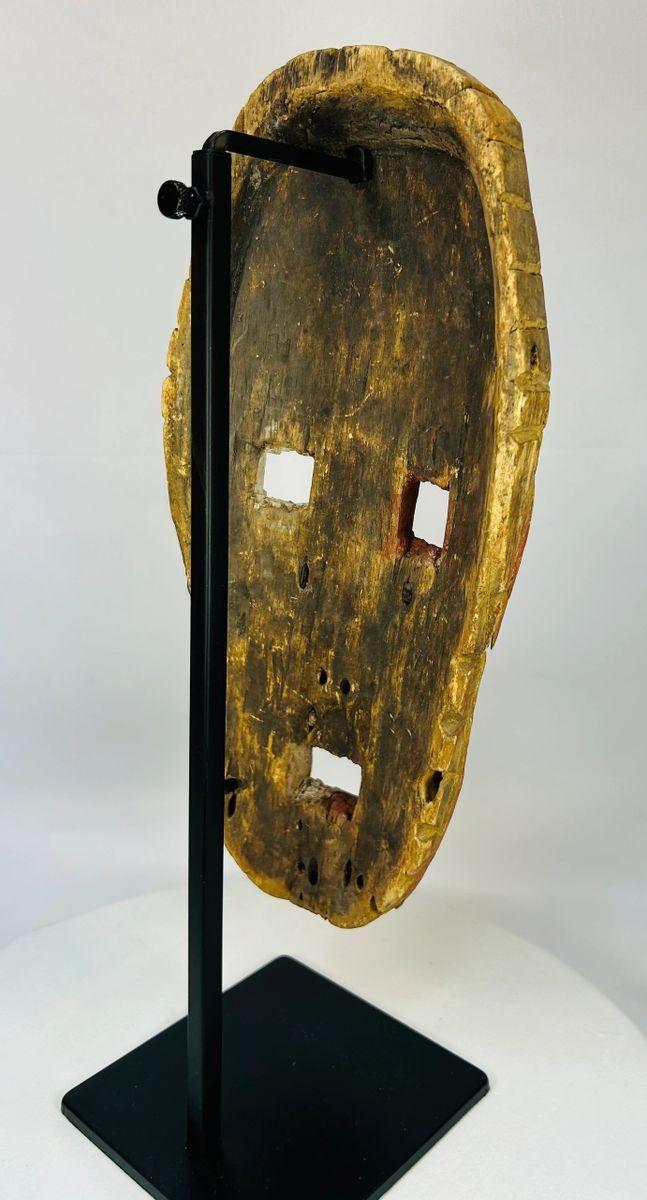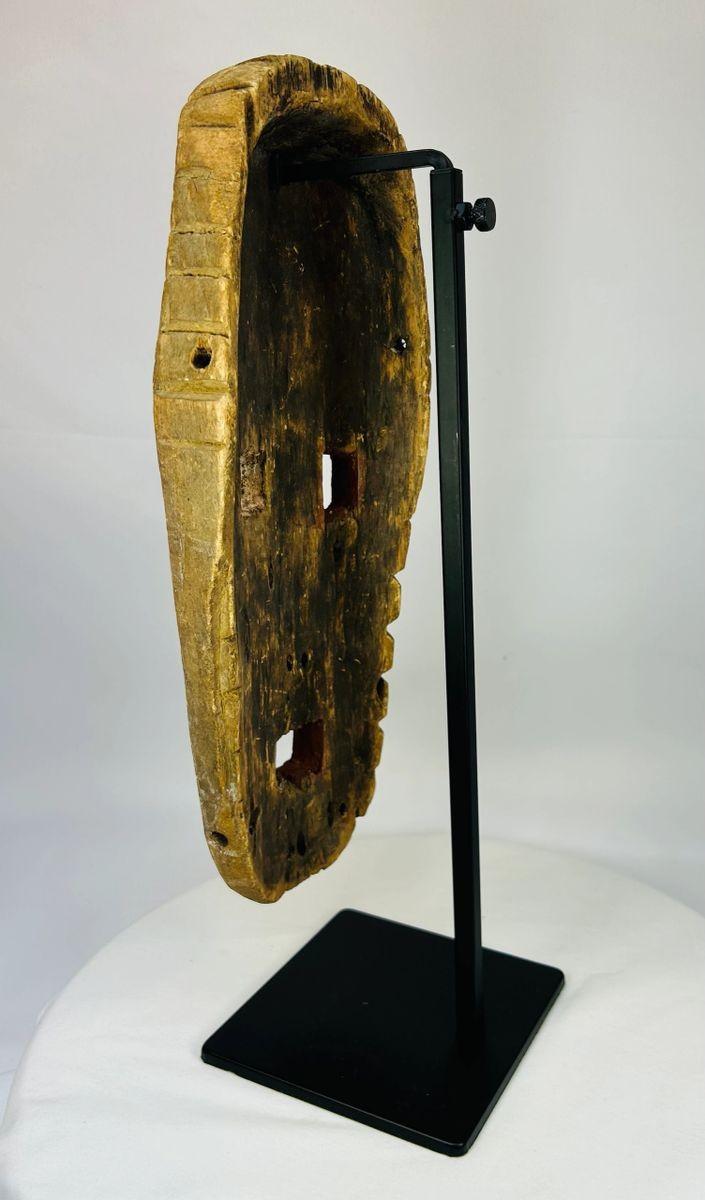Sepik River Tribal Mask | Split-Color Red & White Hardwood Ritual Mask | Papua New Guinea | Circa 1900–1940
Description
More
Less
Historical Context & Origin
Region: Sepik River Region, Papua New Guinea
Material: Hand-carved hardwood, natural earth pigments (red ochre and lime white)
Period: Early 20th Century (circa 1900–1940)
Description
This evocative tribal mask originates from the Sepik River region of Papua New Guinea, an area celebrated for its diverse and spiritually significant artistic traditions. The mask presents a bisected facial design—one half painted in iron-rich red pigment, the other in lime-based white—symbolizing duality, transformation, or opposing spiritual forces. Hand-carved from a single piece of hardwood, it features bold, square-cut eyes and mouth with incised coiffure patterns across the forehead. Deep surface weathering, pigment loss, and age cracks suggest prolonged ceremonial use, likely in dances, spirit rituals, or initiation rites. The raw energy of this piece reflects both artistic mastery and cultural significance.
Features
- Distinctive split-color design symbolizing balance and opposition
- Bold facial features with coiffure carving across the forehead
- Hand-carved from a single block of hardwood
- Remnants of natural red ochre and lime pigments
- Thick encrustations and surface wear from ritual use
Cultural Significance
Masks of the Sepik River region play a vital role in ceremonies involving ancestral spirits and totemic rituals. The stylized design and striking pigmentation were not merely decorative but held profound spiritual meaning—invoking transformation, protection, or ancestral presence. Such masks served as powerful conduits between the physical and spiritual worlds, embodying the beliefs and traditions of their communities.
Condition
Excellent ethnographic condition with age-consistent cracks, pigment loss, and surface encrustations from ceremonial use. Structurally stable, display-ready, and without restorations.
Dimensions (approximate)
Height: 13.5 in
Width: 6 in
Age
Estimated to date from circa 1900–1940
Description
Historical Context & Origin
Region: Sepik River Region, Papua New Guinea
Material: Hand-carved hardwood, natural earth pigments (red ochre and lime white)
Period: Early 20th Century (circa 1900–1940)
Description
This evocative tribal mask originates from the Sepik River region of Papua New Guinea, an area celebrated for its diverse and spiritually significant artistic traditions. The mask presents a bisected facial design—one half painted in iron-rich red pigment, the other in lime-based white—symbolizing duality, transformation, or opposing spiritual forces. Hand-carved from a single piece of hardwood, it features bold, square-cut eyes and mouth with incised coiffure patterns across the forehead. Deep surface weathering, pigment loss, and age cracks suggest prolonged ceremonial use, likely in dances, spirit rituals, or initiation rites. The raw energy of this piece reflects both artistic mastery and cultural significance.
Features
- Distinctive split-color design symbolizing balance and opposition
- Bold facial features with coiffure carving across the forehead
- Hand-carved from a single block of hardwood
- Remnants of natural red ochre and lime pigments
- Thick encrustations and surface wear from ritual use
Cultural Significance
Masks of the Sepik River region play a vital role in ceremonies involving ancestral spirits and totemic rituals. The stylized design and striking pigmentation were not merely decorative but held profound spiritual meaning—invoking transformation, protection, or ancestral presence. Such masks served as powerful conduits between the physical and spiritual worlds, embodying the beliefs and traditions of their communities.
Condition
Excellent ethnographic condition with age-consistent cracks, pigment loss, and surface encrustations from ceremonial use. Structurally stable, display-ready, and without restorations.
Dimensions (approximate)
Height: 13.5 in
Width: 6 in
Age
Estimated to date from circa 1900–1940
You May Also Like

























